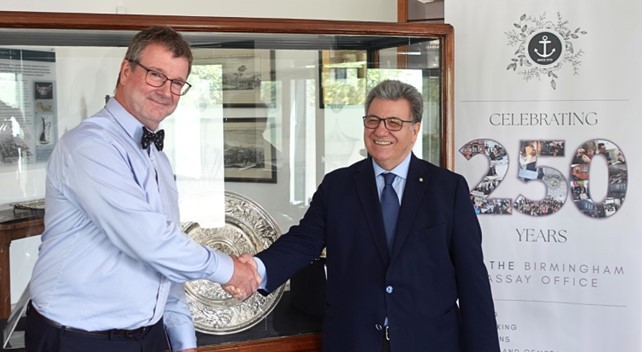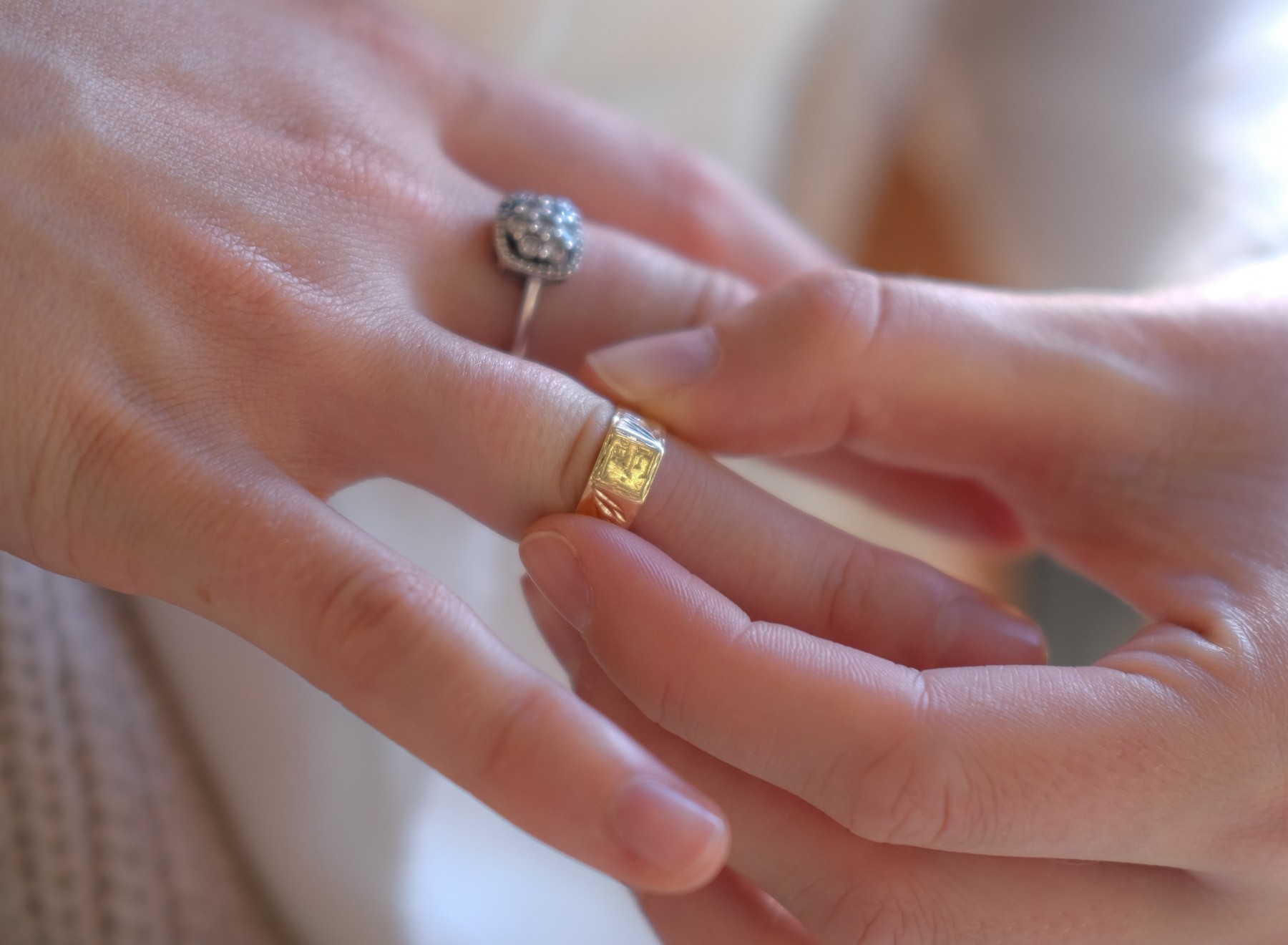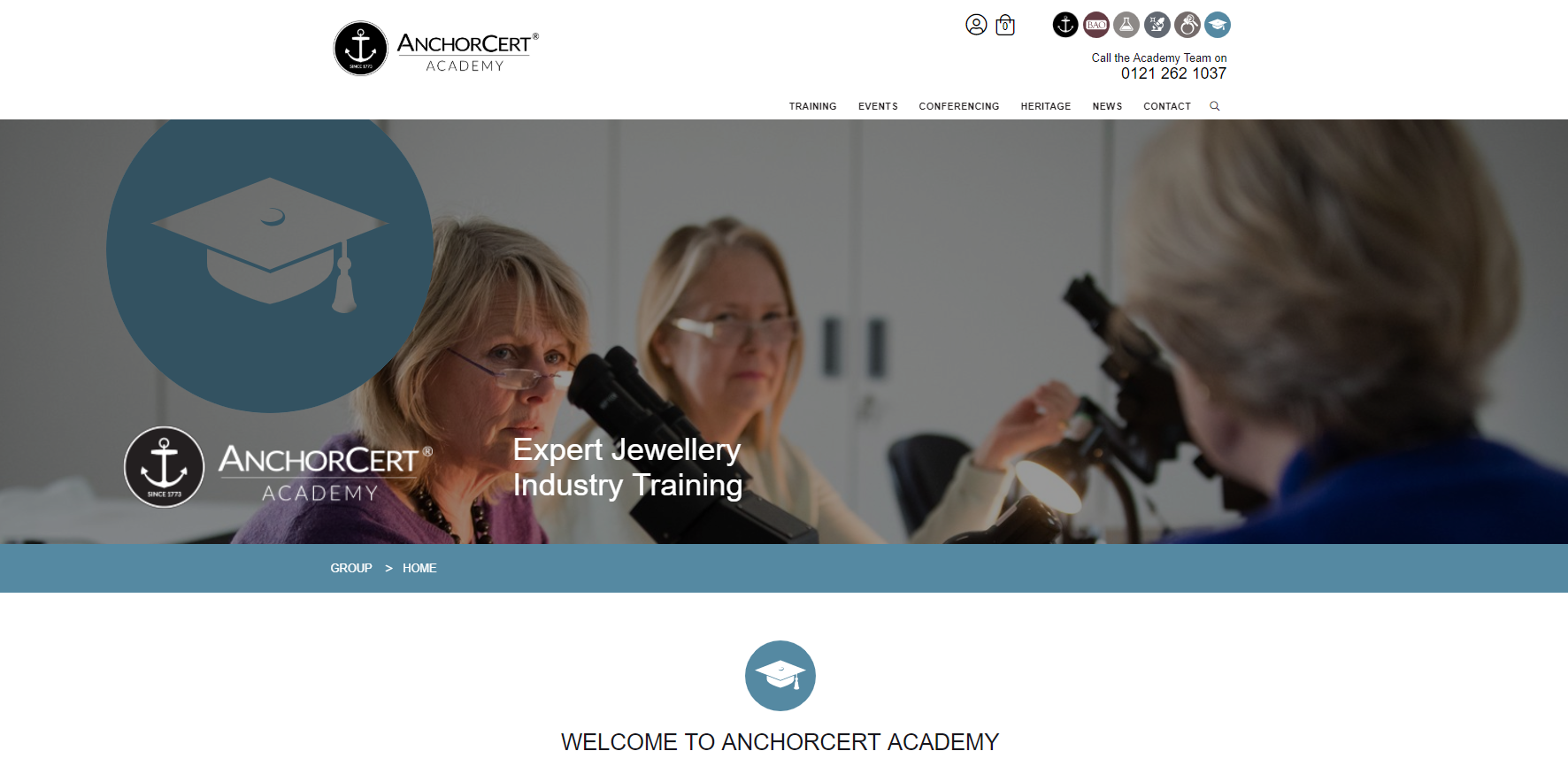 This delicately coloured illustration is taken from a catalogue of ornamental glass designs which was published for the Chance Brothers Glass Works in the mid 19th Century. What remains of the Chance Factory today is situated in Smethwick in the West Midlands as the site is now derelict.
This catalogue was published in February 1847 and is another one of the many treasures from the Assay Office Collection, which contains books on a broad spectrum of the decorative arts and science and technology.
The hardbacked book itself measures just 15cm by 20cm but inside there is a treasure trove of beautifully printed illustrations of stained glass designs from Chance Brothers, which was once one of the greatest industrial glass manufacturers in the world, producing ecclesiastical, domestic and industrial glass for over 150 years. If you grew up before the end of the 1970s, there is a good chance (no pun intended) that you would have eaten off or cooked with Chance glassware in your home, but the company is best known for producing lighthouse glass and the panes of glass for the magnificent Crystal Palace at the 1851 Great Exhibition in London.
Chance Brothers also made a great contribution to the ornamental glass industry as a whole in the West Midlands by launching the careers of other regional stained glass manufacturers in the region, including Thomas William Camm, who went on to found the Camm Factory in Smethwick. He trained and worked at Chance Brothers from an early age.
This delicately coloured illustration is taken from a catalogue of ornamental glass designs which was published for the Chance Brothers Glass Works in the mid 19th Century. What remains of the Chance Factory today is situated in Smethwick in the West Midlands as the site is now derelict.
This catalogue was published in February 1847 and is another one of the many treasures from the Assay Office Collection, which contains books on a broad spectrum of the decorative arts and science and technology.
The hardbacked book itself measures just 15cm by 20cm but inside there is a treasure trove of beautifully printed illustrations of stained glass designs from Chance Brothers, which was once one of the greatest industrial glass manufacturers in the world, producing ecclesiastical, domestic and industrial glass for over 150 years. If you grew up before the end of the 1970s, there is a good chance (no pun intended) that you would have eaten off or cooked with Chance glassware in your home, but the company is best known for producing lighthouse glass and the panes of glass for the magnificent Crystal Palace at the 1851 Great Exhibition in London.
Chance Brothers also made a great contribution to the ornamental glass industry as a whole in the West Midlands by launching the careers of other regional stained glass manufacturers in the region, including Thomas William Camm, who went on to found the Camm Factory in Smethwick. He trained and worked at Chance Brothers from an early age.
 This catalogue contains examples of enamelled, painted, heraldic, and machine-etched glass and at the back there are a series of beautiful, fold-out illustrations of entire ecclesiastical window designs. Some of the geometric patterns for enamelled and embossed glass in this catalogue are startling in their modernity, looking as if they belong in the 1920s at the height of Art Deco rather than in the mid-Victorian period. However, for me, the most beautiful glass designs in the catalogue are those depicting painted flowers. The delicately coloured, enamel-like hues of these illustrations shine from the page, over 160 years since this catalogue was published. So, what was originally intended to be a commercial advertising book has eventually become a beautiful work of art in its own right.
If you would like to know more about Chance Glass, visit www.chanceglass.net, which is useful for collecting information and reference material, and www.chancesglass.co.uk, which gives a flavour of the history and social history of the company, including personal reminiscences.
The Assay Office Library is open to researchers, please contact us for further information if you would like to arrange a visit.
This catalogue contains examples of enamelled, painted, heraldic, and machine-etched glass and at the back there are a series of beautiful, fold-out illustrations of entire ecclesiastical window designs. Some of the geometric patterns for enamelled and embossed glass in this catalogue are startling in their modernity, looking as if they belong in the 1920s at the height of Art Deco rather than in the mid-Victorian period. However, for me, the most beautiful glass designs in the catalogue are those depicting painted flowers. The delicately coloured, enamel-like hues of these illustrations shine from the page, over 160 years since this catalogue was published. So, what was originally intended to be a commercial advertising book has eventually become a beautiful work of art in its own right.
If you would like to know more about Chance Glass, visit www.chanceglass.net, which is useful for collecting information and reference material, and www.chancesglass.co.uk, which gives a flavour of the history and social history of the company, including personal reminiscences.
The Assay Office Library is open to researchers, please contact us for further information if you would like to arrange a visit.
Your item has been added to the basket
You need to create an account, or login before you can add this item to your basket.







